

Performance
Salman Dirir


(CASE)

Welkom Anne Nigten
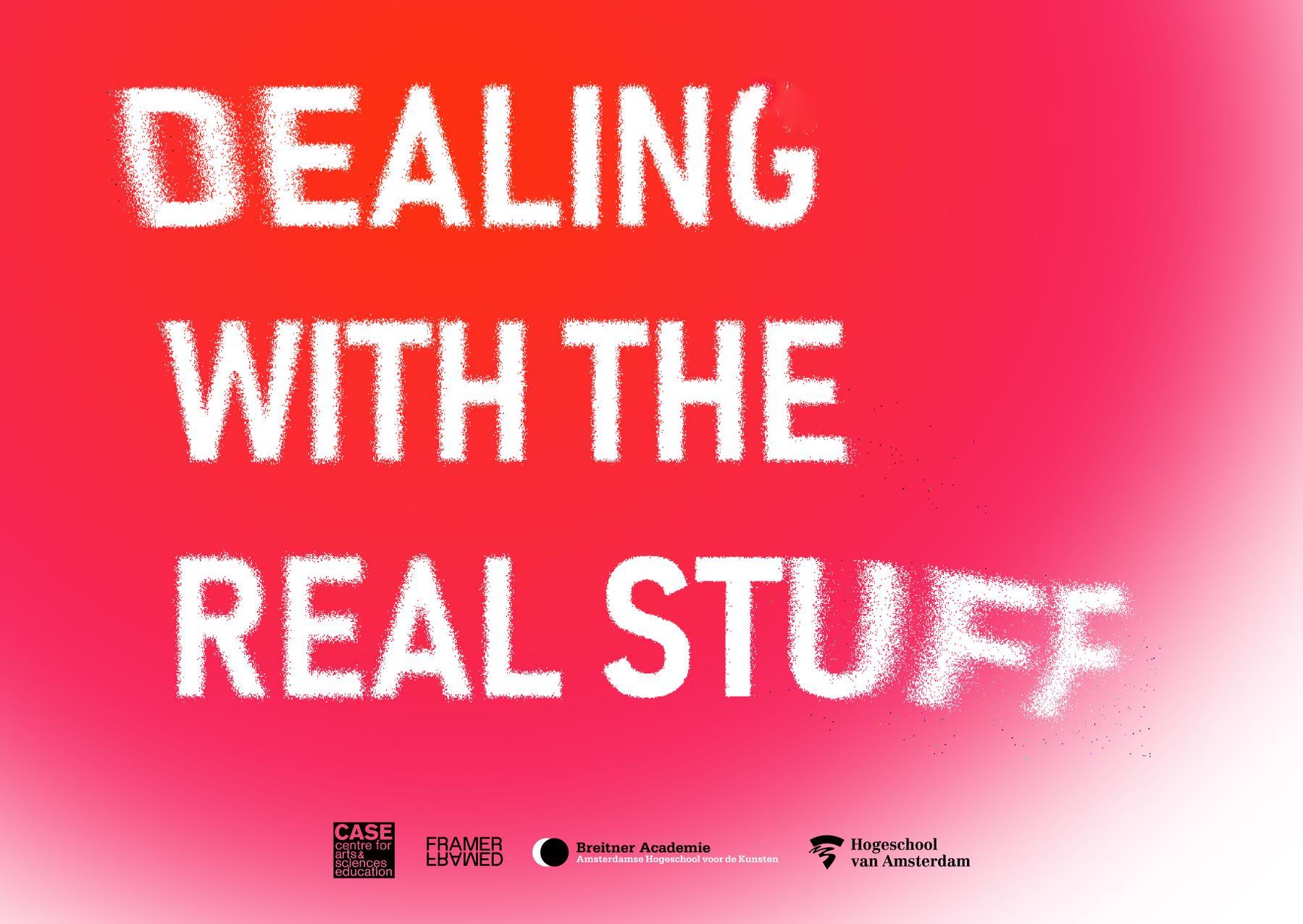
Programma
15:20 Introductie DWTRS Minor, Nathalie Roos
15:40 Keynote, Hayfaa Chalabi
16:15 Pauze
16:30 Keynote, Martijn Dekker
17:00 Good practise Minor studenten & Janneke Nieuwesteeg
17:20 Pauze
17:45 Workshops
19:00 Snacks, muziek en expo studentenwerk
20:00 Einde programma

Introductie Minor Dealing With The Real Stuff
Nathalie Roos
NATHALIE ROOS
DOCENT BREITNER ACADEMIE (AHK)
PHD ERASMUS UNIVERSITEIT EN LECTORAAT KUNSTEDUCATIE (AHK)
Dealing with the Real Stuff








Helmut Dick Nathalie Roos
BambiBenkö
HIMMELSBACH
Janneke Nieuwesteeg
Activistische kunstcollectieven






Tools for Action (NL)
Fossil Free Culture (NL)
Todo por la Praxis (Spanje)
Taring Padi (Indonesië)
Array Collective (Noord-Ierland) PAWA 254 (Kenia)
Activistisch kunstcollectief: Tools forAction

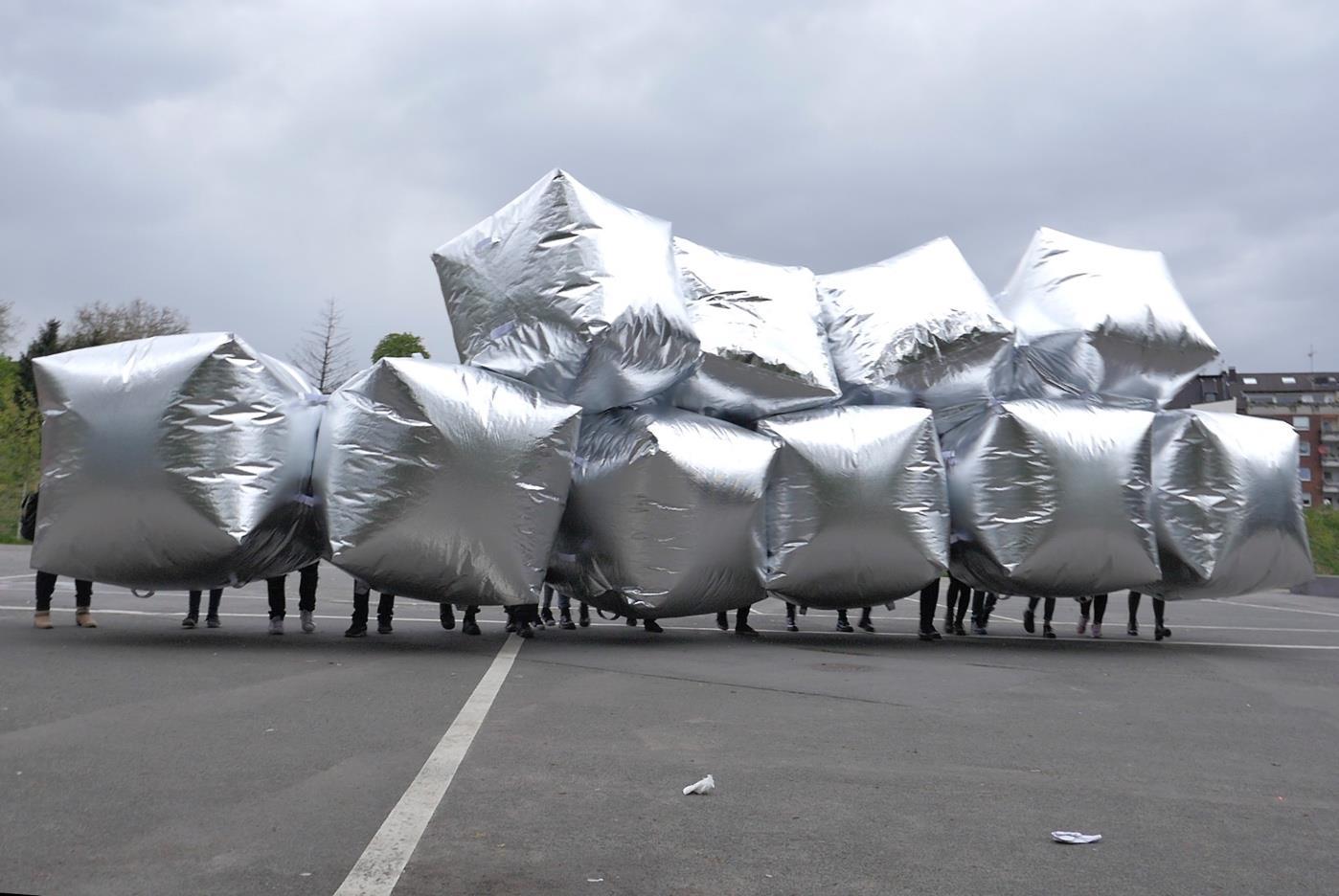
“By using forms of art with their affective qualities for social change, artistic activism can tell another story of political engagement. Where activism can be harsh and polarizing, artistic activism can be more sensitive- art is about reaching people in an emotional way.”
De twee pijlers van de minor: artistiek én educatief
BEELDEND:
Het ontwikkelen van een artistiek project (actie, performance, ritueel, interventie, installatie etc.) in samenwerking met ‘het collectief’.
EDUCATIEF:
Het ontwikkelen en testen van een vakoverstijgende workshop voor VMBO leerlingen, in opdracht van Framer Framed en i.s.m. studenten lerarenopleiding maatschappijleer (HvA) en Montessori Lyceum Oostpoort.
Titels van de minor in de afgelopen drie jaar
FREE SPACES AND NON-PROFIT GOLD.
EEN KOPJE KOFFIE ZO GROOT ALS EEN AARDBOL.
ONE FOR ALL. ALL FOR ONE.

Zou jij in pyjama met je docenten je dromen delen?

REST IS RESISTANCE
Tricia Hersey, 2022
SHY RADICAL* OF STRIJDER?
Shy Radicals. The Antisystemic Politics of the Militant Introvert.
(Hamja Ahsan, 2017)




Leerervaringen studenten
‘Wat wil je leren? Ga naar die plek. Dus leren in de situatie, beïnvloed worden, luisteren, zintuiglijk waarnemen. Niet alleen maar weten, maar echt ervaren.’
‘Ik heb meer besef gekregen over hoe je, naast verf en doek (mijn media), ook andere objecten, mensen, je eigen lichaam en muziek kunt gebruiken in een performance.'
‘Ik heb gemerkt dat de publieke ruimte een hele mooie en goede plek is, die je kunt gebruiken om mensen aan het denken te zetten.’
‘Ik denk dat het voor mij belangrijk is geweest om tijdens deze minor een vorm van vrijheid te ervaren en dat is door buiten de lokalen te gaan gelukt’


Educatief
Ontwikkel en test een workshop met en voor vmbo-leerlingen, aansluitend bij hun werkwijze en thematiek.
Kaders
Activistische kunst:
“This art challenges power and seeks to encourage people to take action, or at least, change the conversation.” (Desai, 2003, p.127)
a) Critique as proposition (Hlavajova, 2019)
Leerlingen/studenten worden aangemoedigd om niet alleen kritiek te leveren op een bestaande situatie, maar worden ook gevraagd om een actie te ontwerpen waarin ze naast hun mening over een bepaalde situatie laten zien hoe die anders zou kunnen.
b) Oppositionele strategie (Duncum, 2011)
Leerlingen/studenten maken kunstwerken (artistieke interventies) in de publieke ruimte, die een directe dialoog aangaan met het publiek over actuele sociale en maatschappelijke onderwerpen.
‘Leerlingen die graag actief bezig zijn (zoals de vmbo-leerlingen die wij lesgaven) willen graag iets met hun handen doen. Door het maken van een kunstwerk kunnen ze de theorie actief in praktijk brengen en dit is heel waardevol. Wel vind ik dat kunst sommige maatschappelijke onderwerpen te veel versimpelt…sommige complexe thema’s kunnen niet op de juiste manier behandeld worden met kunst’ (student mpijleer)
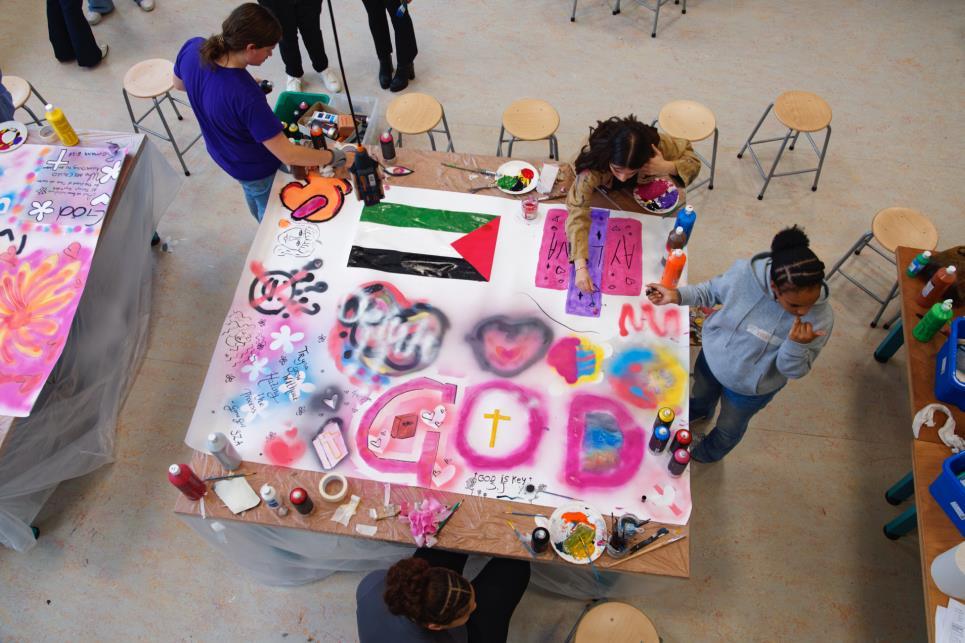
Workshopdag Montessori Lyceum Oostpoort
Het combineren van kunst en burgerschap is heel creatief, leerzaam en uniek, maar het vereist wel veel inzicht en kennis van beide vakken. Maar ik ben het er zeker mee eens dat als je deze twee vakken kunt combineren je op hele gave maatschappelijke kunstwerken uitkomt die verschillende publieken op een andere manier iets kan bijbrengen.’ (student maatschappijleer)
Door kunst in te zetten, kunnen leerlingen op een visuele en tastbare manier hun ervaringen delen. Ook maakt kunst het concrete en moeilijke van activisme een stuk behapbaarder. Wel vind ik dat kunst soms iets te luchtig is en mijn lessen iets te ongestructureerd. Ik heb dan ook veel geleerd van de houding van de maatschappijleerdocenten. Zij hadden toch een wat strengere of serieuze houding, in tegenstelling tot de open houding die ik aanneem in mijn kunstlessen.’ (student kunst)


Keynote Hayfaa Chalabi
Collapsing humanities: On erasure and the importance of pedagogy as a liberatory practice.

Your exotic, your victim, your terrorist, (2018)

‘‘Your exotic, your victim, your terrorist –Visual storytelling to challenge the stigma ofArab women in areas of conflict’’ explores the far-right British representation of Arab women living in the Syrian city of Raqqa under its total occupation by the Islamic State (IS) in 2014. The research draws on historical parallels that go back to the colonial representations ofArab women living in areas of conflict, focusing on the photographic representation ofAlgerian women during the French colonization of Algeria (1830-1962).

I want a husband who can satisfy me in bed': Syrian war has left cities full of single women... but given lesbians freedom to have relationships.
James Harkin for the DailyMail, 2016.

The colonial harem Malek Alloula 1986
Refugees Welcome, (2020).
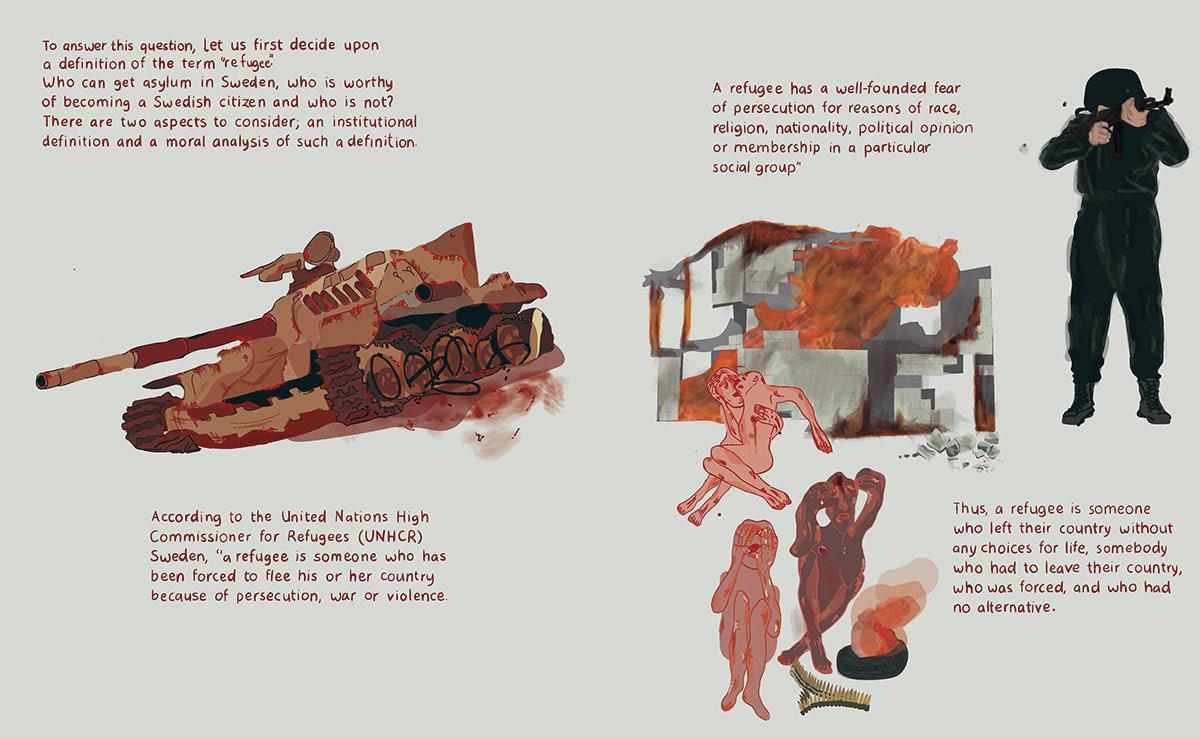

I developed different methodologies of illustrative storytelling to create a work for memory and history writing where I tried to understand how to document asylum processes through collecting and curating asylum narratives prohibited from being documented in Sweden.

‘‘These are the contradictions that we are expected, as Palestinians, to solve within ourselves: to exist without talking about why we exist. In a way, she wished, very politely, that I could, very politely, cease to exist’’.
At the Threshold of Humanity Gaza is not an abstraction Karim Kattan on thebaffler.com, October 31, 2023.
Disruption is an important form of protest but not a sustainable one.

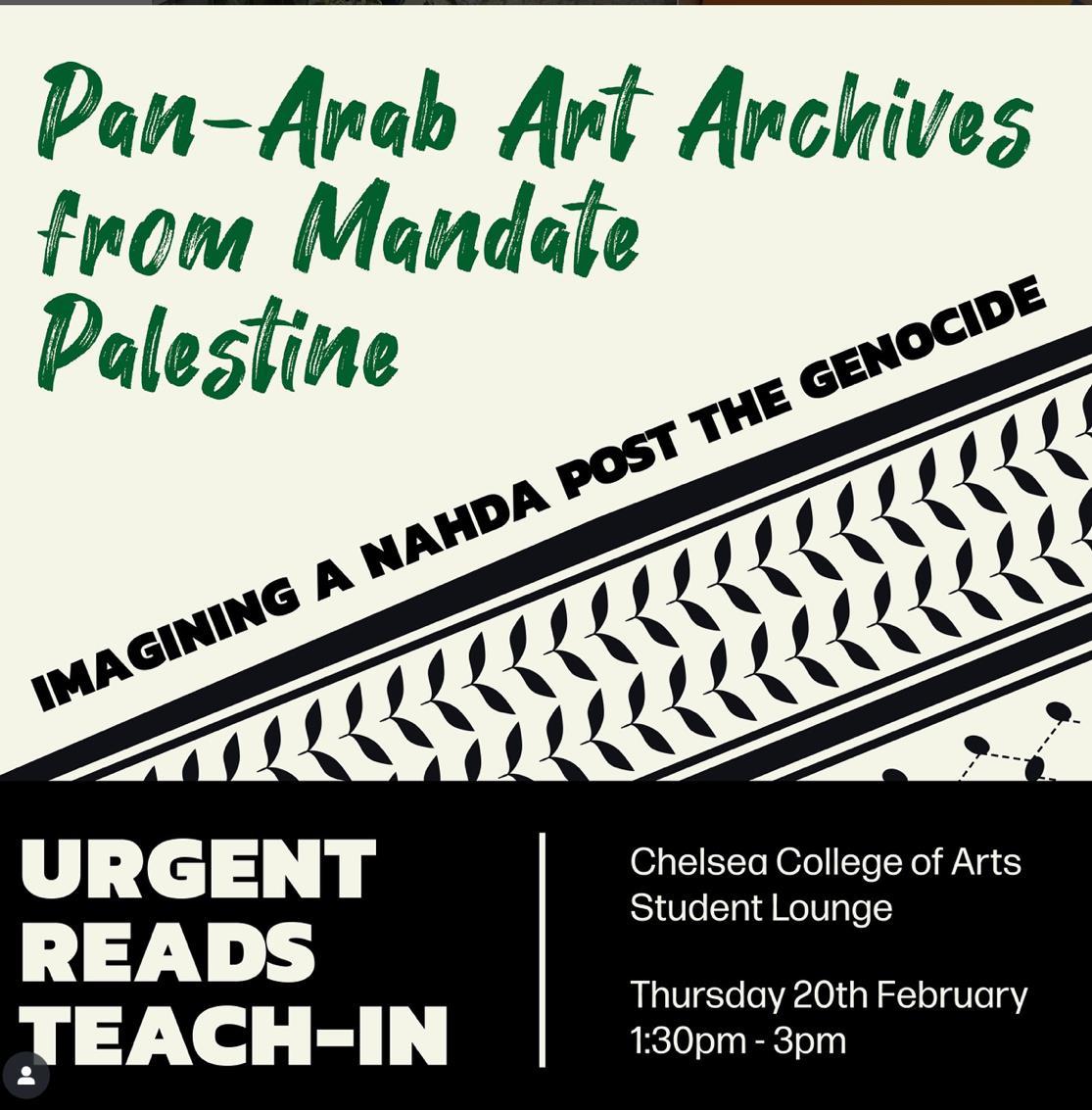
The oppressor benefits from processes of erasure and from separating criticality from education because it allows him to implement myths that can live.
However, the oppressor never separates politics from the classroom.
Education is never innocent!

https://www.arts.ac.uk/

Escalation Risks from LLMs in Military and Diplomatic Contexts STANFORD UNIVERSITY, MAY 02, 2024.
HAI.STANFORD.EDU/
AI summarisation doesn't summarise; it simulates a summary based on the learned parameters of its model. AI research tools don't research; they shove a lot of searched-up docs into the chatbot context in the hope that will trigger relevancy. For their part, so-called reasoning models ramp up inference costs while confabulating a chain of thought to cover up their glaring limitations.
The role of the University is to resist AI.
The text of a seminar given at the Goldsmiths Centre for Philosophy and Critical Thought on June 11th 2025. Published On https://www.danmcquillan.org/

Is ChatGPT biased against Palestinians? Mona Chalabi. On Instagram. October, 2023.
What is different with AI in the mix is the speed with which targets can be algorithmically determined and the mandate of action this issues. The +972 report indicates that the use of this technology has led to the dispassionate annihilation of thousands of eligible –and ineligible – targets at speed and without.
Gaza war: Israel using AI to identify human targets raising fears that innocents are being caught in the net Elke Schwarz for Queen Mary University of London. April, 2024.
‘‘The Israeli occupation has struck 6-Million-dollar deal with the U.S company ‘Clock Tower’ to produce youthtargeted content, as part of a broader plan to train AI tools like ChatGPT to serve the apartheid state’s narrative.’’
Israel wants to train ChatGPT to be more pro-Israel
Nick Cleveland-Stout
On ResponsibleStatecraft, 29 Sep 2025/.
Design history, design pedagogy, and the politics of erasure.
Let’s go back to this statement:
The oppressor benefits from processes of erasure and from separating criticality from education because it allows him to implement myths that can live.
Western taste hierarchies are formed by processes of erasure.

Ornament is wasted labour and hence wasted health.
Modern man, the man with modern nerves, does not need ornamentation; it disgusts him.
Ornament and Crime
Adolf Loos 1913.
Modernism as a practice of erasure.



Indonesia under Dutch rule 1949



British Mandate of Palestine 1930
‘‘To cleanse away ornament is to remove ornament as the annihilation of native cultural ornamentation. This means that the idea of universal modernism clearly has a strictly Western attitude and could easily be problematised in a global context’’.
Clean: Not the Monochrome, Universal and Neutral Modernism You Expect. Bart Manders. Konstfack, 2019.
Unpacking myths – On gender, land, and the politics of erasure.
The importance of unpacking the myth of Palestine having been an empty land before the Nakba (The catastrophe) of 1948 in the context of Arts.
Resurgent Nahda: The Arab Exhibitions in Mandate Jerusalem. Edited by Nadi
Abusaada
Kaph Books, 2024

The Nahda
The Arabic noun Nahda ةضهن,( ) typically glossed as “rebirth” , “revival”, or “awakening”, became an organizing principle for social consciousness and uprisings in the Arab World during a century of intellectual, cultural, and material reform. The Nahda is generally divided into two main phases. The first began in the 1860s and lasted through the 1910s. This Nahda marks the peak of regional reforms in the Arab World, which began as early as Napoleon’s political and military campaign in Egypt. The second Nahda took place between the 1920s and 1940s and was widely marked by the emergence of modern Arab literature and widescale publications.
Source: The Attaché: Online Articles
The Nahda and (Re)defining the Arab World
By Lina Lashin |
Date: 2022-01-31
Elias Khoury argues in his article For a Third Nahda that the first Nahda (between the late nineteenth century and the 1930s) was against imperialism – both Ottoman and European – and later revolved around “unity and independence.” But it “was born incomplete … possibly because it embodied a new consciousness and was unable to marshal social forces adequate to it”. The second Nahda began with “consciousness of the Nakba” and the loss of Palestine, but it “failed” because of the “absence of democracy, … inability to build Arab unity… and military inadequacy”.

Pan-Arab exhibitions in Mandate Palestine
Inauguration of the second Arab Exhibition in Jerusalem, 1934.
Source: Said Husayni Collection, The Palestinian Museum.
In the articles and advertisements on the Arab exhibitions published in the 1930s. The ‘’Arab Nahda’’ was continuously evoked as both the path and the destination. The Nahda was a project with many faces. Some spoke of an economic Nahda, others of a women’s Nahda, an Arab Nahda, or an artistic Nahda.
The common denominator was a desire for change. This change had a keen eye towards the past but understood its present and future mission - asserting Arab unity and exchange was a key component of this vision.
Resurgent Nahda: TheArab Exhibitions in Mandate Jerusalem.
Edited by Nadi Abusaada Kaph Books, 2024
Jamal Badran – The illustrator of the Exhibition
Born in Haifa in 1909; studied Islamic Art at the Hamzawi School in Cairo from 1922-27; returned to Palestine and began working on the first major 20th Century renovation of the Al-Aqsa and Dome of the Rock Mosques in Jerusalem from 1927-28; was sent by the British Mandate Inspector of Education and Art to the UK to study at the Central College of Arts and Crafts from 1934-37; returned and assumed a teaching position at the Arab College in Jerusalem; taught Islamic Art at other colleges as well; in the early 1940s, was delegated by UNESCO to teach Art in Tripoli and Benghazi, Libya; after the 1948 Nakba, ended up in Damascus, Syria, where he taught Art at several institutions;

Source: Palestinian Academic Society for the Study of International Affairs.
Jamal’s Badran’s illustrations for the Exhibition


Guidebook for the Second Arab Exhibition in Jerusalem, 1934. Cover design prepared by Jamal Badran.
Source: Resurgent Nahda. The Arab Exhibitions in Mandate Palestine. Edited by Nadi Abusaada. Kaph books, 2024

Source: Self-Portrait of a Nation The Arab Exhibition in Mandate Jerusalem, 1931–34 Nadi Abusaada.

Jamal Badran. Appreciation certificate for participation in the First Arab Exhibition in Jerusalem.
Source: Resurgent Nahda. The Arab Exhibitions in Mandate Palestine. Edited by Nadi Abusaada. Kaph books, 2024

Jamal Badran., Postcard of the Second Arab Exhibition in Jerusalem. 1934.
Source: Resurgent Nahda. The Arab Exhibitions in Mandate Palestine.
Edited by Nadi Abusaada. Kaph books, 2024
Sophie Halaby
Sophie Halaby, widely known as one of Palestine’s pioneering female artists, was born in Jerusalem in 1905 to a Palestinian father and a Russian mother. From 1933 until her death in 1998, Halaby was based in the Palestinian capital, where she was born, though the Nakba forced her to relocate from West Jerusalem to East Jerusalem. Sophie was active in Jerusalem’s cultural scene and exhibited her work at every opportunity.

Source: The Cllection. Dafbeirut.org.
Accessed on : 20.02.2025

SOPHIE HALABY, Palestine.
Untitled, 1930
Medium: Charcoal on paper 61 x 46.5 cm

SOPHIE HALABY, Palestine .
Untitled, N.D.
Medium: Watercolour on paper 46 x 54 cm
Zulfa Al-Sa’di
Zalfa Al-Saadi was born in 1905 to a well-known family in Old Jerusalem, whose name is “Haret Al-Saadiyya” . She was trained as a young girl by the well-known Jerusalemite painter Nicolas Al-Sayegh. It was not common at that time for women to practice this activity, but she was a talented girl, and she displayed her paintings in the first Arab National Exhibition, which was held at the Islamic Council in Jerusalem in 1932, and her works became popular. The admiration of the exhibition audience, which included specialists from Arab countries such as Egypt, Iraq and Syria.
Source: Resurgent Nahda. The Arab Exhibitions in Mandate Palestine.
Edited by Nadi Abusaada. Kaph books, 2024

Man with Goat, Oil on board, 35 x 25 cm
Year: circa 1940s
Medium: Painting
Zulfa Al Saadi
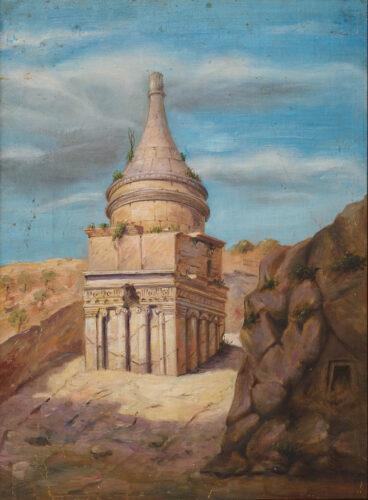
PHARAOH’S HAT (TOMB OF ABSALOM)
Year: c. 1940s
Medium: Painting Exhibition: Parallel Histories
Zulfa Al Saadi
Although her work was largely prompted by the political context of 1930s Palestine, al-Sa‘di also drew from a robust archive of images, newspapers, and texts, recognizing their value as agents of national unity. Her ability to bridge Islamic themes with Christian motifs, historical texts with contemporary media, politics with poetry, painting with photography, and art with nationalism made her work palatable to an Arab intelligentsia who sought to reconcile tradition with modernity. Additionally, this paper will consider the context in which al-Sa‘di's oeuvres gained traction, most notably the 1933 National Arab Fair in Jerusalem.
“The Roots for a Palestinian Nahda”: Zulfa al-Sa‘di and the Advent of Palestinian Modern Art
Written
by: Laura Tibi Published on: Institute for Palestine Studies. Issue 83. 2020.
Implementing a pedagogy of laziness, individualism, and helplessness as we witness a genocide.
At times, I feel defeated.
I was silent and nothing came of it.
I spoke and nothing came of it.
I cursed, I apologized, and nothing came of it..
…I wrote about the river and the sea, about tomorrow and the sun, and nothing came of it.
I wrote about oppression and depravity – purity too.
I slept without a bite of bread.
I dreamt without dreams…
.. When my roof was suddenly blown off into the sky and with it a wall, a window, and the youngest of my children, I gathered myself , I became GAZA
A thousand warplanes circled and hit me. I collapsed and collapsed again, and then rose in a scream. I called out, but nothing came of it.
Nothing came of it.
Nothing came of it.
I lost faith and believed, lost faith and believed again, and lost faith and believed and… nothing came of it, nothing came of it.
And the filthy world asks me: All this…what of it?
Palestinian, Ibrahim Nasrallah (trans. Huda Fakhreddine) March 24, 2024.
At times, I feel hopeful.
At times, I feel hopeful.
Palestinian Literature of Resistance Under Occupation, 1948-1968. Ghassan Kanafani.
At times, I feel that hope is irrelevant.
Without despair and without hope, without a center or a determining solution, dreaming of a revolution not bound by a midan, and comforting the loneliness of my cell with a love unfettered by a jailer. Graffitti for two.
AlaaAbdelFattah andAhmed Douma.
Published on MadaMasr, 2014.
On the importance of beauty, love, and joy in problematizing the state of politics.
Etel Adnan


Etel Adnan (1925-2021) was a Lebanese-American poet, essayist, and visual artist. The poet, novelist, journalist, and artist Etel Adnan was born in Beirut in 1925. In the late nineteen-fifties, while working as a philosophy professor in Northern California, Adnan began to express herself in a new language—painting—making luminous abstractions of nature.

We gaan verder om 16:30
Pauze

Keynote Martijn Dekker

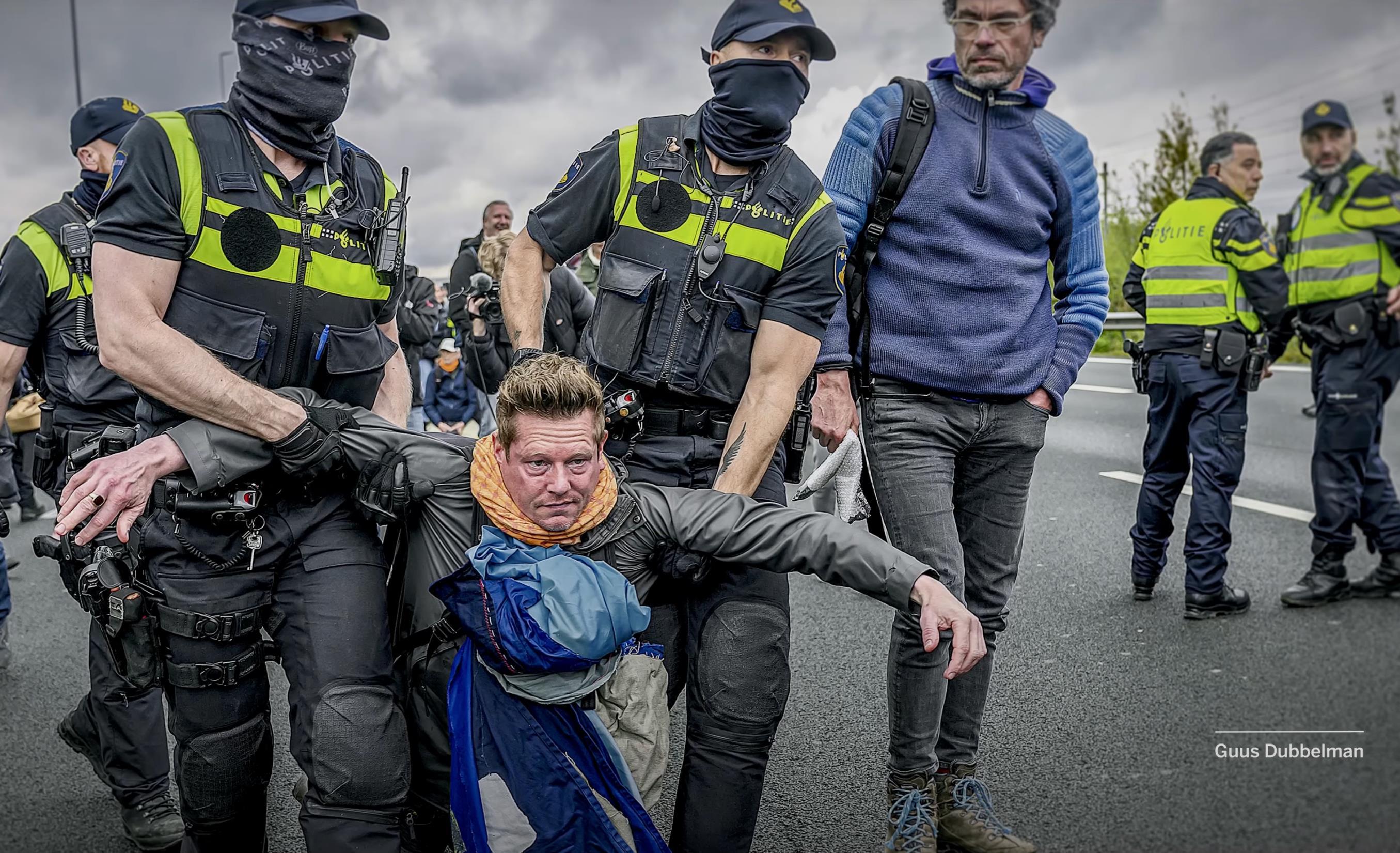



Good practices
Studenten, Janneke Nieuwesteeg










Montessori Lyceum
Amsterdam:
Kunstlokaal The Good, the Bad and the Teachable (Nathalie Roos, Margot Mertens en Bridget Verhoeven)
Lokaal 020 Dialoog
Burgerschapsonderwerpen in de klas (Janneke Nieuwesteeg)
Auditorium Dreaming Wide Awake (Bambí Benkö)
FramerFramed:
Mezzanine Ideëenworkshop (Domenique Himmelsbachde Vries)
Buiten Gedragsbedrog (Helmut Dick en Selby Gildemacher)
Benedenruimte Visual Thinking (Savitri Bergraaf)

Tot 19:00 bij de snacks en de studenten expo!


